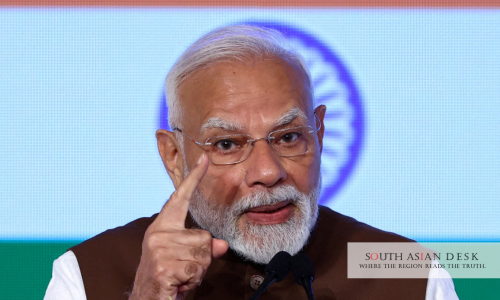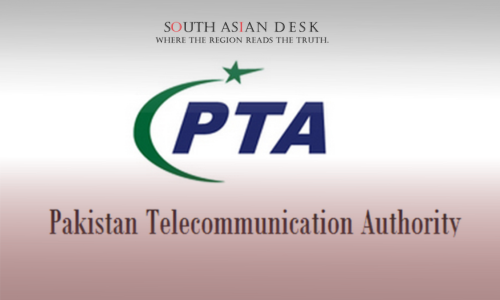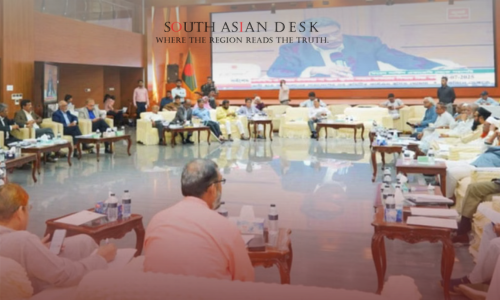New Delhi, Sunday, September 21, 2025 – In a televised address to the nation at 5:00 PM, Prime Minister Narendra Modi launched the Modi Swadeshi Campaign 2025, urging Indians to discard foreign-made products in favour of local alternatives amid escalating tensions with the United States over trade tariffs.
The Modi Swadeshi Campaign 2025 holds profound implications for South Asia’s interconnected economies, potentially bolstering regional self-sufficiency while straining bilateral ties with major trading partners like the US. As India navigates this Modi local products US conflict, neighbouring nations may witness ripple effects in supply chains and investment flows, fostering a broader push towards intra-regional trade under frameworks like SAARC.
Modi’s Urgent Plea in Swadeshi Campaign 2025
Prime Minister Modi’s address, delivered ahead of the implementation of next-generation Goods and Services Tax (GST) reforms on Monday, September 22, 2025, wove together themes of economic empowerment and national pride. He emphasised the need for citizens to embrace the Modi Swadeshi Campaign 2025 as a cornerstone of the Aatmanirbhar Bharat (Self-Reliant India) initiative.
“A lot of products we use daily are foreign made, we just don’t know … we will have to get rid of them,” Modi stated, highlighting the subtle infiltration of imports into everyday life. This call comes at a time when India’s 1.4 billion consumers represent a lucrative market for global brands, many accessed through platforms like Amazon.com.
Modi further implored, “We should buy products that are made in India,” directing his message particularly to shopkeepers and retailers. He encouraged them to prioritise stocking domestically produced goods to stimulate economic growth and reduce dependency on overseas imports. This renewed vigour in the Modi Swadeshi Campaign 2025 aligns with ongoing efforts to promote ‘Vocal for Local’, a slogan that has gained traction since its inception in 2020.
The speech also touched on the broader context of GST reforms, which will simplify tax slabs to 5% and 18% for most items, making local products even more competitive. Food staples, medicines, soaps, toothpastes, and insurance services will either become tax-free or attract minimal levies, directly benefiting households across income brackets.
Local Products Push Amid US Conflict
The timing of Modi’s remarks cannot be divorced from the intensifying Modi local products US conflict. Just weeks ago, US President Donald Trump imposed a 50% tariff on imported Indian goods, souring bilateral trade relations that have long been a pillar of India’s export strategy. This escalation has prompted grassroots responses, with Modi’s supporters launching boycott campaigns targeting iconic American brands such as McDonald’s, Pepsi, and Apple staples in urban Indian households.
In recent weeks, Indian companies have ramped up promotions of local alternatives, from indigenous soft drinks to homegrown electronics, echoing the spirit of the Modi Swadeshi Campaign 2025. The move is seen as a strategic counter to the US tariffs, which could otherwise inflate costs for Indian exporters and disrupt supply chains vital to South Asia’s manufacturing hubs.
Official data from the Ministry of Commerce indicates that US-India trade volumes exceeded $190 billion in the fiscal year ending March 2025, with India facing a widening deficit. The tariffs threaten sectors like textiles, pharmaceuticals, and information technology services, where Indian firms hold significant stakes. By advocating for local products, Modi aims to insulate the domestic market, potentially redirecting consumer spending inwards and fortifying economic resilience.
Commerce Minister Piyush Goyal’s forthcoming visit to Washington is anticipated to address these frictions. Sources close to the ministry suggest discussions will focus on reciprocal tariff reductions and easing restrictions on H-1B visas, which have also strained ties. This diplomatic outreach underscores the dual track of confrontation and negotiation in the Modi local products US conflict.
Background: Roots of the Swadeshi Revival
The Swadeshi movement traces its origins to India’s independence struggle in the early 20th century, when leaders like Mahatma Gandhi championed boycotts of British goods to foster economic sovereignty. Revived under Modi’s leadership, the Modi Swadeshi Campaign 2025 builds on post-pandemic self-reliance drives, accelerated by global disruptions like supply chain bottlenecks.
In parallel, initiatives such as the Khadi and Village Industries Commission (KVIC) launched the ‘Khadi Mahotsav 2025’ on the same day as Modi’s address, promoting handmade textiles and rural entrepreneurship. According to the Ministry of Micro, Small and Medium Enterprises, this event aligns with the broader push for swadeshi, aiming to reach every household with indigenous products.
Government figures show that domestic manufacturing’s share in GDP has risen to 17% since 2014, buoyed by policies like Production Linked Incentives. Yet, challenges persist: imports of consumer electronics alone topped $15 billion in 2024, underscoring the scale of the shift required under the Modi Swadeshi Campaign 2025.
Economic Ramifications for South Asia
Beyond India, the Modi local products US conflict could influence regional dynamics. Pakistan and Bangladesh, key players in textiles, may see opportunities in diverted US-bound exports, while Sri Lanka’s tea and apparel sectors could benefit from heightened intra-South Asian trade. However, a prolonged standoff risks broader inflationary pressures, as global commodity prices fluctuate.
Analysts note that if the Modi Swadeshi Campaign 2025 gains momentum, it could inspire similar localisation drives across the subcontinent, potentially reducing reliance on Western markets and strengthening ASEAN-South Asia linkages.
What’s Next for Trade Diplomacy
As the Modi Swadeshi Campaign 2025 unfolds, eyes will turn to Goyal’s Washington talks, expected within the fortnight. Success here could temper the Modi local products US conflict, paving the way for balanced growth. Meanwhile, the GST reforms promise immediate relief, with estimates suggesting annual savings of ₹2.5 lakh crore for consumer funds that could further fuel demand for made-in-India goods.
In conclusion, Prime Minister Modi’s vision positions the Modi Swadeshi Campaign 2025 not merely as a reactive measure to external pressures, but as a proactive blueprint for enduring self-reliance, with lasting echoes across South Asia.
Published in SouthAsianDesk, September 22nd, 2025
Follow SouthAsianDesk on X, Instagram, and Facebook for insights on business and current affairs from across South Asia.






